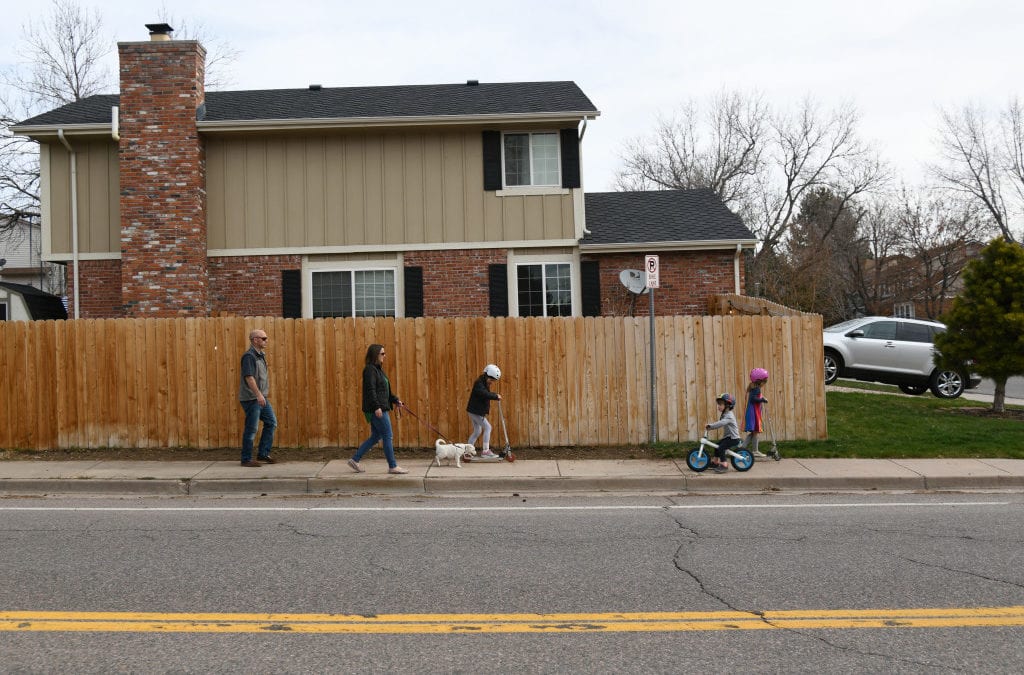Since the start of the COVID-19 pandemic, most government and scientific officials have repeatedly stressed the importance of people maintaining a distance of at least six feet between each another in public. Those officials include Colorado Gov. Jared Polis, along with the state Department of Public Health and Environment, who have consistently stressed maintaining that specific distance through a variety of unique examples.
But a group of global experts in aerosol science are sounding the alarm that current guidelines and regulations — including the widely-acknowledged six-foot rule — may not be enough to keep individuals safe in public settings.
The group of 37 scientists across the globe, including a CU-Boulder chemistry professor, are in discussions with the World Health Organization to encourage it to recognize the potential importance of airborne transmission of COVID-19. The group also is suggesting other measures to help reduce the spread of the virus.
“(The) WHO already recommends wearing respiratory protection such as N95 masks for health care workers performing aerosol-generating procedures,” said Jose Jimenez, a professor of chemistry at the University of Colorado specializing in aerosol science. “But they have failed to recognize that regular breathing is a well-established aerosol-generating procedure, which is increased by talking or heavier breathing, such as when exercising.”
Jimenez’s reasoning is rooted in the thought that the virus can spread through airborne droplets in addition to direct transmission, like coughing and sneezing.
“The best analogy is when someone is smoking tobacco or marijuana,” Jimenez said. “Think about how many times you have walked by people and smelled tobacco or pot smoke that someone else had exhaled. Often, those people were farther than six feet.
“If that happens, we are inhaling the contents of someone’s lungs with limited dilution. Then we could inhale enough viruses to get sick, if the person exhaling the air was sick. Therefore, the six-foot rule, while useful, is not enough. We have to imagine that everyone we cross paths with is smoking, and we want to make sure that we never smell their smoke. So we want to keep larger distances, especially indoors or with light winds, or if they are upwind of us.
“Personally, I’ve been trying to keep at least 25 feet from anyone outdoors.”
Kimberly Prather, a professor of environmental chemistry at the University of California San Diego, agreed with Jimenez’s recommendations.
“Air is not stagnant outdoors, especially at the beach, so it can carry aerosols further than six feet,” Dr. Prather said. “So, I am not comfortable with the six-foot outdoors rule in a densely populated area.”
Of particular worry to some experts is the possibility that runners and joggers could be susceptible to spreading the virus. When a person breathes, they emit small droplet aerosols. When those are exhaled outdoors, those droplets are smaller and don’t settle as quickly as they do indoors, increasing the possibility of transmission from infected individuals.
“If runners and joggers are breathing hard, it could cause any virus released in their breath to travel farther if they are infected,” said Linsey Marr, a professor of civil and environmental engineering at Virginia Tech University, who researches the airborne transport of infectious diseases. “It wouldn’t hurt for them to maintain a greater distance.”
Marr, who is part of the group of 37 scientists petitioning the WHO for stricter regulations, suggests that people outdoors may be better off maintaining a distance closer to 10 feet.
A final key unanimous point of agreement among the group of professors is the public need for masks, and it appears those suggestions could be implemented in the near future.
Dr. Anthony Fauci, the director of the National Institute of Allergy and Infectious Diseases and a key figure on the White House’s coronavirus task force, said on Tuesday that the Centers for Disease Control and Prevention is looking at recommending the use of masks in public “very carefully”.
That would be welcomed by Jimenez and his colleagues, a group which is unanimous in suggesting that members of the public wear masks when they have to go to a store.
“If I go to the store, I wear an N95 mask. Everyone should be doing this in public at this point from my view,” Prather said. “If we reduce the spread of the virus, this is our main hope right now. Once we have testing, we can more intelligently figure out who should stay home, who has already been infected, etc. Unfortunately, we are forced to be extra cautious right now as we are literally flying blind.”
This content was originally published here.

